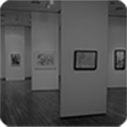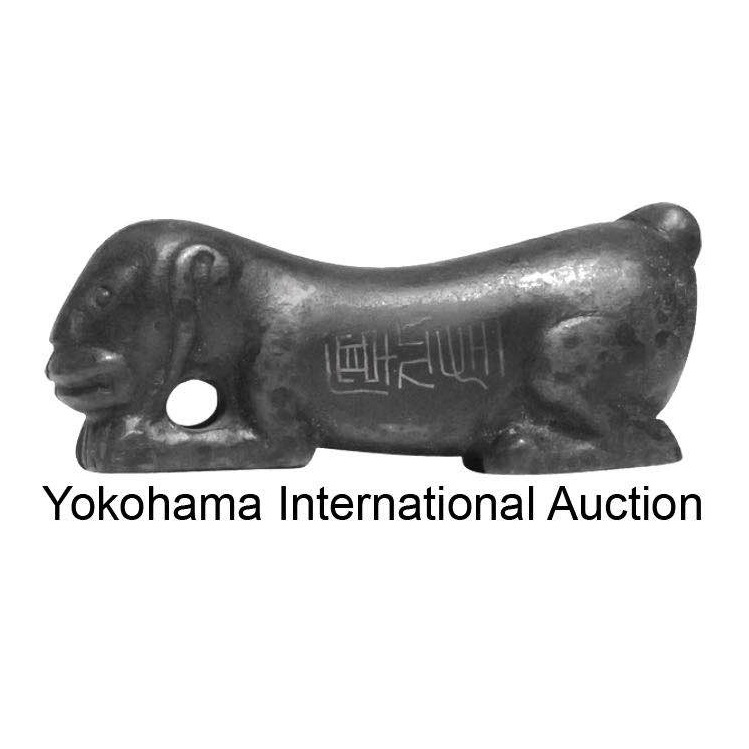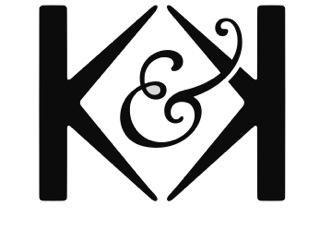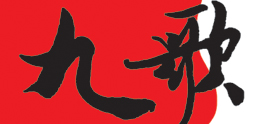| 作品描述 |
清乾隆 珍罕剔紅雕銅胎鎏金阿文缽
The cinnabar lacquer bowl is of ovoid form with rounded sides, expertly carved thro...
清乾隆 珍罕剔紅雕銅胎鎏金阿文缽
The cinnabar lacquer bowl is of ovoid form with rounded sides, expertly carved through the thick lacquer to feature two pairs of opposing cartouches bearing Arabic Islamic scripts, which translate to 'Allah' and 'Muhammad is the Messenger of Allah.' Between the cartouches, the exterior is adorned with intricate floral and swirling designs, complemented by a band of key-fret patterns around the top rim. The base showcases a central lotus motif enclosing the Qianlong reign mark, surrounded by stylized petal patterns. The interior is richly gilded. Accompanied by a Japanese wood box and cloth. Qing Dynasty Qianlong period, 18th century.
Height: 3 7/8 in (9.7 cm) Diameter: 6 7/8 in (17.5 cm)
Provenance: Property from an important private collection in Portland, Oregon
Chinese cinnabar lacquerware is celebrated for its rich, deep red color and intricate craftsmanship, often showcasing detailed carvings and elaborate designs. The creation of cinnabar lacquer involves applying multiple layers of lacquer, derived from the sap of the lacquer tree. Each layer is meticulously dried and polished before the next is added, a labor-intensive process that can involve up to 100 layers and take months to complete. This results in a thick surface that artisans carve with intricate designs. The bowl’s design is extremely rare, possibly the only example of its kind. It likely draws inspiration from 14th-century Damascus metalwork, reflecting the historical exchange between Chinese and Islamic artistic traditions. See a 14th century brass bowl in the collection of Metropolitan Museum of Art, accession Number: 91.1.534 (Fig.1). For comparison, consider a 18th century cinnabar lacquer bowl in the National Palace Museum, Taipei (Fig.2). Additionally, a similar 18th century bowl with Islamic inscriptions but made of glass was sold at Christie's Hong Kong, Lot 2156, on November 28, 2012, for HKD 2,300,000 (Fig.3).
剔紅漆器因其濃郁的深紅色和精美的工藝而著稱,經常展示精細的雕刻和華麗的設計。剔紅漆器的製作涉及多層漆的應用,這些漆是從漆樹的樹液中提取的。每一層漆都經過精心乾燥和拋光,然後再塗上一層,這是一個耗時且勞動密集的過程,可能需要多達100層漆並且耗時數月才能完成。這種工藝最終形成厚厚的表面,工匠在其上進行精細的雕刻。此碗的紋飾極為罕見,可能是唯一的例子。此碗的紋飾和造型可能受到了14世紀大馬士革金屬工藝品的啟發,反映了中國與伊斯蘭藝術傳統之間的歷史交流。參見紐約大都會藝術博物館收藏的一件14世紀嵌銀黃銅碗,館藏編號91.1.534(圖1)。作為比較,可以參考台北故宮博物院的一個剔紅漆佛缽(圖2)。此外,一個類似的但以琉璃製成並帶有伊斯蘭銘文的十八世紀碗在2012年11月28日於佳士得香港拍賣,拍品編號2156,售價為港幣2,300,000(圖3)。
|
|---|
 全球艺术品拍卖文献搜索鉴定平台
全球艺术品拍卖文献搜索鉴定平台























